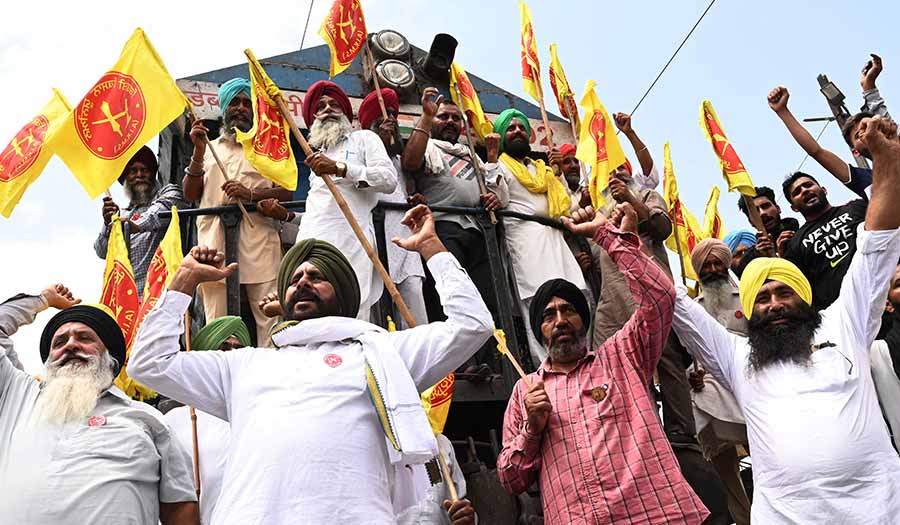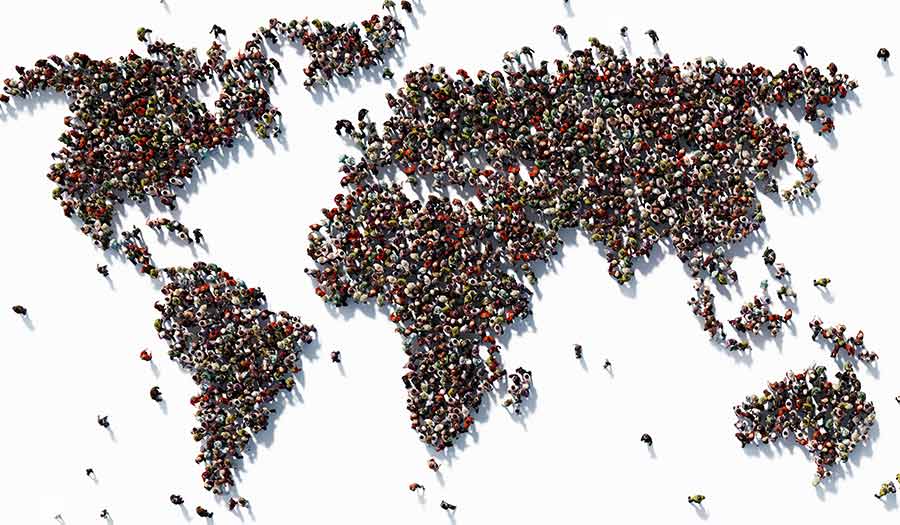 AFP via Getty Images/Narinder Nanu
AFP via Getty Images/Narinder Nanu
Article
India overtaking China as the world’s most populous nation shines a spotlight on the emerging superpower.
Learn the why behind the headlines.
Subscribe to the Real Truth for FREE news and analysis.
Subscribe NowIndia became the world’s most populous country in April, eclipsing an aging China, the United Nations reported. The milestone raises questions on whether India can repeat the economic success that has made China central to the world economy and a leading global power.
The news came as India is promoting itself as a rising international player as the host of this year’s Group of 20 summit. It is also becoming a more attractive destination for multinational companies seeking to reduce their reliance on China.
India’s population was estimated to have reached 1.425 billion in April, which means it has surpassed mainland China, the UN’s Department of Economic and Social Affairs said in a statement. The forecast is based on latest estimates of the global population.
It is unclear exactly when India’s population passed China’s. Demographers say the limits of population data make it impossible to calculate a date.
The Indian government, which has not performed a census since 2011, has not officially commented on the UN estimates. The timing of when India surpassed China in population will likely be revised once India conducts its next census, John Wilmoth, director of the United Nations’ population division, said at a news conference at UN headquarters in New York.
“The precise timing of this crossover isn’t known, and it will never be known,” Mr. Wilmoth said. “There is uncertainty in the data.”
Similarly uncertain is what India’s exact role will be on the world stage—most notably, how it will get along with its neighbor China.
The two Asian nations have a complicated relationship, including robust trade ties and a long-running border dispute. The United States and its allies increasingly see India, the world’s largest democracy, as a counterweight to China.
But New Delhi’s interests do not always align with Washington’s. India, unlike much of the West, has refrained from condemning its Cold War ally Russia over its war in Ukraine, instead adopting a neutral stance as India’s purchases of Russian crude have soared.
Some in India see Western sanctions against Russia as an opportunity.
“It is a windfall situation. We are getting discounted oil which is a huge advantage for India. Compared to virtually nothing prior to the Ukraine invasion, India’s crude oil imports have risen to over a million barrels of oil per day from Russia,” Manoj Joshi, distinguished fellow at the Observer Research Foundation told Voice of America. “And now that they are under sanctions, India sees an opportunity in promoting exports also, so that will be a double advantage.”
Geopolitical concerns aside, India’s sheer size and its young population give it the potential to replicate China’s economic trajectory.
Young workers who flooded into China’s cities to take factory jobs starting in the 1990s were an essential ingredient in the boom that saw China become the world’s second-largest economy.
But China’s population peaked in 2022 and has since started to fall. By the close of the century, its population could drop below 1 billion, the UN said. The country’s elderly population is swelling while its birth rate is still plunging, from 1.7 babies per woman in 2017 to 1.2 in 2022, according to UN data.
By contrast, India has the world’s largest young population, a higher fertility rate, and has seen a consistent decrease in infant mortality. Experts caution against alarm about overpopulation, however, as the country’s fertility rate has been steadily falling, from over five births per woman in the 1960s, to two in 2022. India’s population is expected to stop growing and stabilize around 2064.
“The main driver is the levels of fertility in these two countries,” Mr. Wilmoth said.
Historic reforms in the 1990s spurred spectacular growth and India’s $3 trillion economy is the fifth largest in the world today as its high-skilled sectors have soared.
But India’s economy is still far behind China’s. In 1970, the two countries had nearly equal per capita incomes, but today China’s gross domestic product is $12,556 per person, compared to India’s $2,256, according to 2021 World Bank data.
Economists warn that even as India’s GDP has surged, so has joblessness. About 80 percent of Indian workers still toil in informal jobs, which are often precarious, low paying, and offer little to no benefits. Still, India stands to benefit from what is referred to as a “demographic dividend,” when the swelling of the working-age population spurs rapid economic growth, provided there is strong participation in the labor force, Mr. Wilmoth said.
India’s vast population also means that many challenges play out on a huge scale, whether this is grappling with climate change, disparities between its urban and rural populations, a shrinking number of women in the workforce or a widening religious divide.
“For this century to belong to India, it must make the most of its demographic advantage,” said Brahma Chellaney, a professor of strategic affairs at the Centre for Policy Research. “China’s demographic crisis is timely for India’s growth—but only if it can find enough good quality employment for its teeming youth.”
This article contains information from The Associated Press.
- Real Truth Magazine Articles
- ANALYSIS
 Can Earth Sustain the Population Boom?
Can Earth Sustain the Population Boom?
More on Related Topics:
- Two Years On, Survivors of Turkish Earthquake Still Struggle with Loss and Hardship
- What to Expect After South Korea’s Impeached President Was Indicted on Rebellion Charges
- The Discovery of Brutal Mass Graves in Syria Reveals a Legacy of Horror
- China’s Population Falls for a Third Straight Year, Posing Challenges for its Government and Economy
- What to Know About South Korean Acting President Han’s Impeachment


